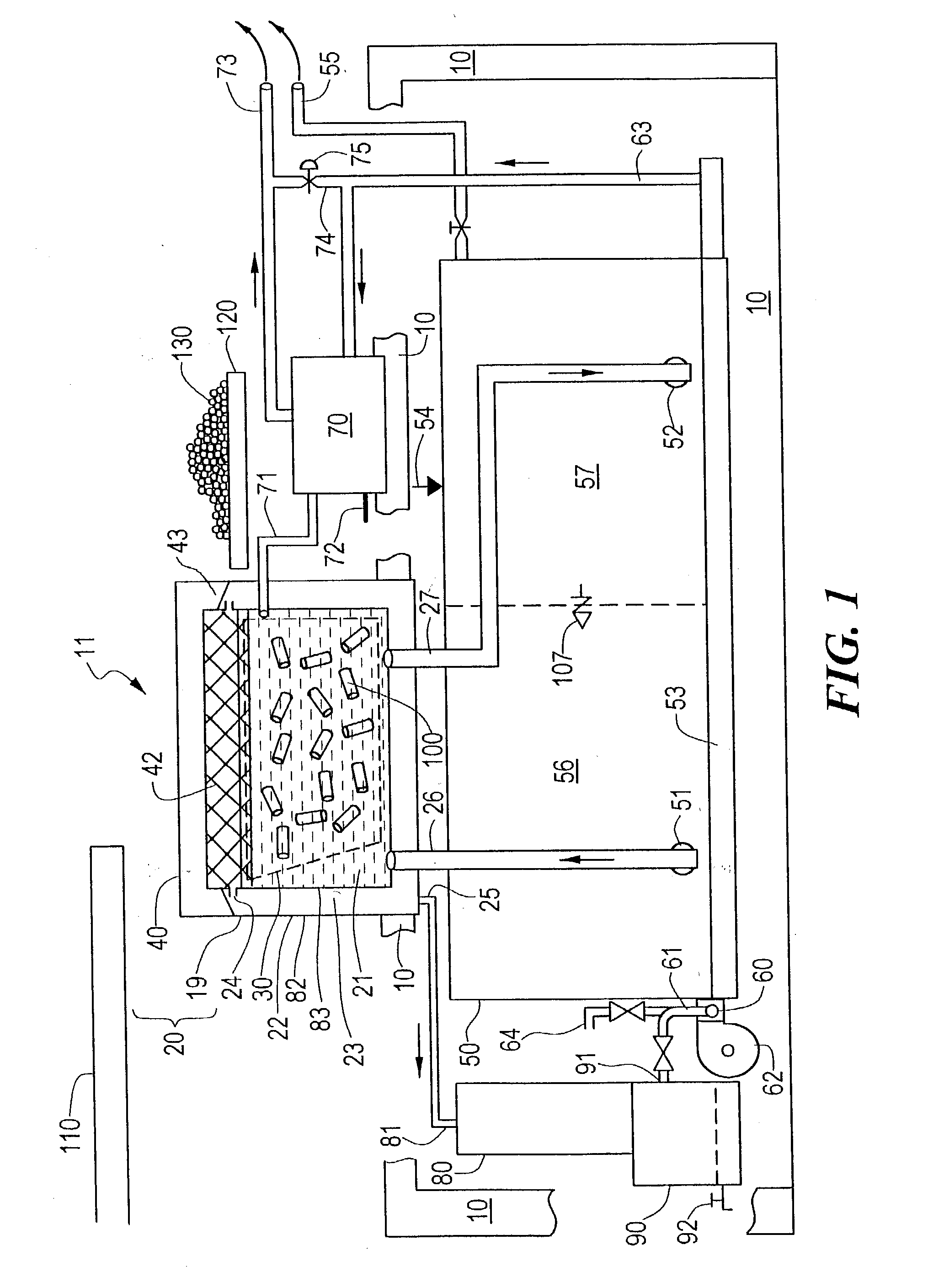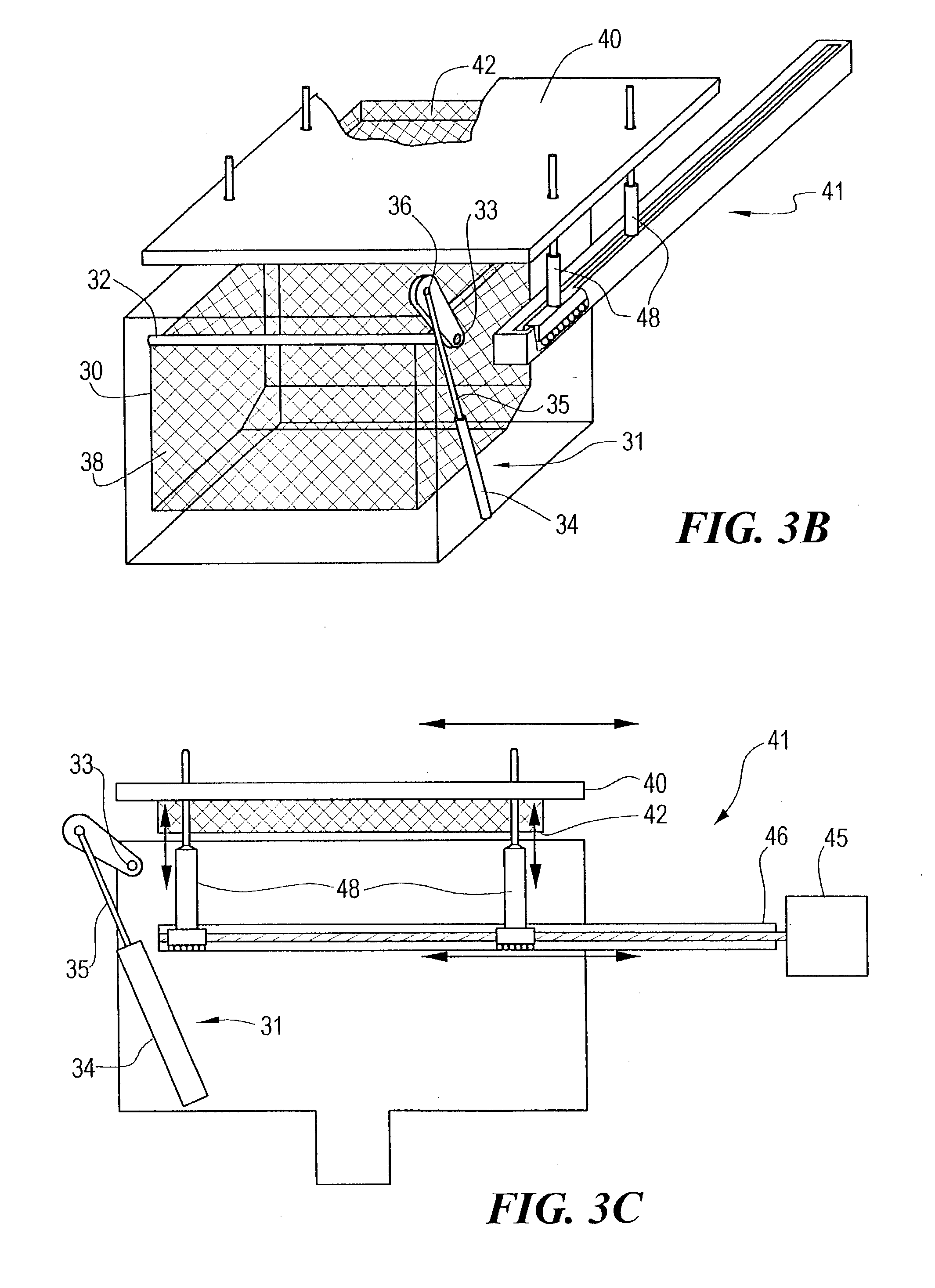Batch thermolytic distillation of carbonaceous material
a carbonaceous material and thermolytic technology, applied in the direction of liquid displacement, charging-discharging device combination, separation process, etc., can solve the problems of owner with a costly disposal problem, not suggested a commercially viable processing method and apparatus, etc., to minimize the risk of operating personnel exposure, prevent self-ignition of combustible products, and minimize the effect of disposal problems
- Summary
- Abstract
- Description
- Claims
- Application Information
AI Technical Summary
Benefits of technology
Problems solved by technology
Method used
Image
Examples
example 1
[0076] Distillation of Wood
[0077] Molten tin is used at a temperature of approximately 851.degree. F. (455.degree. C.). When the reactor is filled with molten tin, the depth of the tin in the reactor is 30 inches. The basket is 60 inches long, 36 inches deep and 60 inches wide, i.e. 62.5 cubic feet per basket. Wood having a maximum cross section of one inch is loaded into the basket. Wood is immersed for a predetermined immersion time of 10 minutes. This is sufficient to fully cook wood having a smallest cross section no greater than one inch.
[0078] Assuming the 62.5 cubic feet basket is loaded with wood having a density of 15 lb / cubic ft., at a fill density of 54%, there are 506 lb of wood in the basket. Assuming a 12 minute cycle time to provide a 10 minute immersion time, then 506 lb of wood is treated every 12 minutes. Thus, a single distillation unit has a capacity to treat approximately 2,500 lb per hour i.e. 60,000 lb per 24-hour day, or approximately 30 tons per 24-hour day....
example 2
[0079] Distillation of Shredded Rubber Tires
[0080] In the second preferred embodiment the invention provides a process for converting pieces of shredded rubber tires to hydrocarbons and char by immersion in molten tin. Pieces of shredded rubber tires are converted at substantially the same temperature, approximately 851.degree. F. (455.degree. C.), at which lump wood is converted.
[0081] In the second preferred embodiment the reactor is filled with molten tin to a depth of 30 inches. The basket is 60 inches long, 36 inches deep and 60 inches wide, i.e. 62.5 cubic feet per basket. Pieces of shredded rubber tires, having a length of 2-3 inches, a cross section of one half inch, and a density of 55 lb / cubic ft are loaded into the basket. The pieces are immersed for a predetermined immersion time of 12 minutes. This is sufficient to fully cook pieces having a cross section of one half inch.
[0082] Assuming the 62.5 cubic feet basket is loaded at a fill density of 45% there are 1546 lb of ...
PUM
| Property | Measurement | Unit |
|---|---|---|
| Length | aaaaa | aaaaa |
| Temperature | aaaaa | aaaaa |
| Temperature | aaaaa | aaaaa |
Abstract
Description
Claims
Application Information
 Login to View More
Login to View More - R&D
- Intellectual Property
- Life Sciences
- Materials
- Tech Scout
- Unparalleled Data Quality
- Higher Quality Content
- 60% Fewer Hallucinations
Browse by: Latest US Patents, China's latest patents, Technical Efficacy Thesaurus, Application Domain, Technology Topic, Popular Technical Reports.
© 2025 PatSnap. All rights reserved.Legal|Privacy policy|Modern Slavery Act Transparency Statement|Sitemap|About US| Contact US: help@patsnap.com



